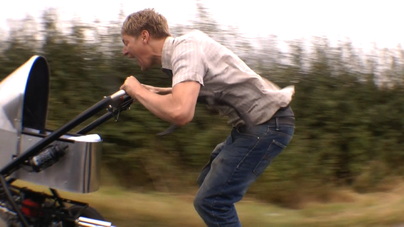And I'll have these pages on the left to thank. The notebook was a gift. It's large and floppy, with a kind of faux leather cover, light brown, and newsprint-like paper inside. For a year I didn't write much in it because of the paper. I'm fairly particular about my paper. When I'm writing fiction by hand, I have to use either a legal pad, because my father writes on legal pads, or the thick, bumpy, really nice paper that comes in really nice notebooks. This one on the left was not up to par. Or so I thought. Then, a few weeks ago, I had the chance to see a rare first edition of Walt Whitman's Leaves of Grass stashed away in the Providence Athenaeum. The paper was very similar to the stuff in my disrespected newsprint. There's a character in the novel who is found of Whitman, and a turtle named after the poet, too, so I took these little connections as signs, and put away the legal pad in favor of the floppy notebook. Plus, the paper is made in Japan and this novel is all about ninjas.
This week I spoke with engineers and scientists about cloud storage and the technological alternatives to testing new cosmetics and drugs on animals. These stories are not related. But they've got me thinking about sheep with too much lipstick and rouge grazing on the tops of clouds or maybe storing their excess makeup in these clouds so that their shepherd does not find them and use them himself. Or maybe they store their makeup in the clouds because they're afraid that if the shepherd finds them then he will realize they are smarter and more image-conscious than he thinks. He'll sit there under the stars and think, "Forget sheep-herding. There's no money in it. What I'll do is take these image-conscious sheep and go on the road. Start a song-and-dance show. With sheep!" Meanwhile, all the poor sheep want to do is hang out and graze and wear their makeup.
No, that's not right. I'll keep those stories separate.
Now for something completely different. Here's an NFL analyst and former quarterback, Trent Dilfer, talking about another quarterback, Terrell Pryor:
"He's putting in the lonely work that it takes to be successful at any position in this league."
The lonely work. I love that idea. And I think there's an element of lonely work to any pursuit or passion. The guy who plays quarterback in front of 80,000 people or the musician who sings before a packed stadium - they put in the solitary work to get to that crazy, crowded point. Unfortunately it appears that Pryor needs to put in quite a bit more lonely work, since he's not having a very good season.
From the NFL to the South African artist William Kentridge:
"There's always discovery in the making...the making has to be loose enough and open-ended enough for there to be a place for discovery."
And:
"In the work that I do there's a lot of place for not the unconscious but the non-planned to have a place and to lead to ideas...that's where the art comes from."
















